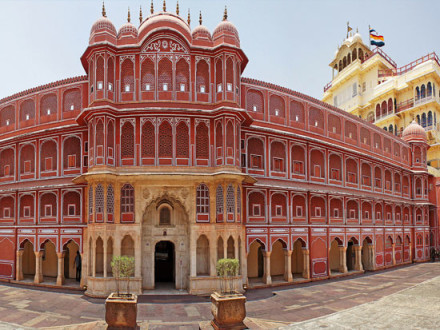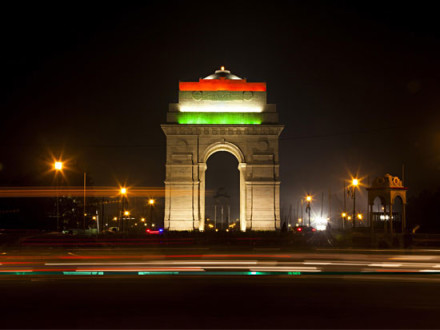Often confused with Gateway of India, India Gate was originally called All India war memorial. It is located aside Raj path on the eastern edge of the ceremonial axis. India Gate was treated a s a memorial to the dedicated to more than 80,000 army soldier who died during the First world war fighting for the country. Names of servicemen, soldiers and officers have been inscribed on the gate.
Amar Jawan jyoti
Designed by Sir Edward Lutyens, India Gate resembles the triumphal arch similar to the arch of Constantine outside the colossium in Rome. India Gate has also been compared to Gateway of India and Arc de Triomphe in Paris.
In 1971 after the Bangladesh Liberation war, a black marble plinth structure with a rifle and capped war helmet with a base for setting flames was built below the towering India Gate. This simple structure came to be called the “Amar Jawan jyoti”- Flame of the immortal soldier.
historical importance of India Gate
The historical importance and its great past make India Gate a major tourist attraction in New Delhi. Every evening the India gate shines under the illumination from 7:00 pm till 9:30 pm. On 26th January every year Republic day parade commences form Rashtrapathi Bhavan and Passes around the India gate.
Edwin Lutyens was a leading architect of New Delhi and was also a designer of the war memorials. Regarded as a niche architect and designer, Lutyen to his credit had designed 65 war memorials and Cenotaph in London is one not to be forgotten. Like the Cenotaph memorial in London, India Gate too held no ties, limitation or restriction to color, caste, creed, sect and religion. It was a secular memorial with a 30 feet span and creative rework of the Arc de Triomphe.
Structure of India Gate
India Gate is 42 meter tall and stands on a base of Bharatpur stones. At a distance of about 150 meters at a junction of six roads you will find a cupolathat’s 73 feet high. It was inspired from sixth century pavilion from Mahabalipuram. Consideration to place Mahatma Gandhi’s statue was being discussed but was left under consideration only. Talks to construct National war memorial around the Cupola also adjoining the Prince Park is under consideration.
The Amar Jawan Jyotiis manned by guards round the clock. Wreaths are placed on Vijay Divas, 26th January by the Prime minister commemorating the soldiers who laid their life for the country along with the chief of armed forces and other dignitaries.
India Gate is a mammoth structure and looks elegant when you approach it form a distance. The architectural splendor of the memorial simply leaves an impact and feeling that’s hard to describe in words. A decade later after the foundation stone was laid, Lord Irwin inaugurated the memorial and said “those who after us shall look upon this monument may learn in pondering its purpose something of that sacrifice and service which the names upon its walls record.”




